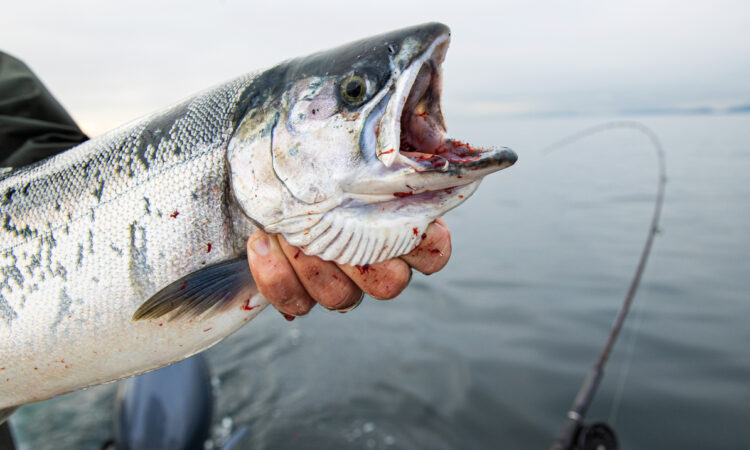
Today, U.S. Secretary of Commerce Gina M. Raimondo announced the allocation of $12.2 million to address fishery resource disasters that occurred in Alaska’s 2022 Kuskokwim River salmon fishery, 2021 and 2022 Upper Cook Inlet East Side Setnet salmon fishery and the Port Gamble S’Klallam Tribe’s 2021 Puget Sound fall chum and coho salmon fisheries.
Congress provided fishery resource disaster assistance funding in the 2022 and 2023 Disaster Relief Supplemental Appropriations Acts. Positive determinations make these fisheries eligible to receive a funding allocation from those appropriations. The funds will improve the impacted fisheries’ long-term social, economic and environmental sustainability. The allocation may fund activities in support of commercial, recreational, tribal fishing communities and subsistence users, as well as other associated industries affected by the disaster.
“Each year, we see how climate change continues to have severe impacts on the fisheries and ecosystems that are vital to our economy, and the Commerce Department is working to mitigate these impacts,” said U.S. Secretary of Commerce Raimondo. “This funding will assist with the recovery of salmon fisheries in communities across Alaska and Puget Sound by bolstering fisheries restoration efforts, minimizing the risk of future disasters and helping build back stronger.”
NOAA Fisheries used commercial, processor and charter fishery revenue loss information to allocate funding across the eligible fishery resource disasters. Additionally, the agency considered the traditional, cultural and ceremonial uses of fisheries resources, including subsistence, recognizing that such uses extend beyond what can be quantified solely through commercial revenue loss.
“Productive and sustainable fisheries are essential for nurturing our Blue Economy, generating employment opportunities, providing sustenance, supporting Alaska Native cultural traditions and preserving the health of our ocean ecosystem,” said Janet Coit, assistant administrator for NOAA Fisheries. “We are optimistic that these disaster funds will make a beneficial impact on the ongoing recovery of the affected tribes and fisheries.”
In the coming months, NOAA Fisheries will work with the State of Alaska and the Port Gamble S’Klallam Tribe to administer these disaster relief funds. Activities that can be considered for funding include restoration and prevention efforts, including fishery-related infrastructure projects, habitat restoration initiatives, state-run vessel and permit buyback programs, and job retraining initiatives.
Fishing communities and individuals impacted by these disasters are encouraged to collaborate with the Port Gamble S’Klallam Tribe, and/or the Pacific States Marine Fisheries Commission and the State of Alaska, as appropriate. These entities will be responsible for formulating spend plans for the allocated funds. Additionally, certain fishery-related businesses affected by the disasters might also qualify for assistance from the Small Business Administration.
See a summary of fishery disaster determinations, including this announcement, and learn more about fishery disaster assistance.
Climate, weather, and water affect all life on our ocean planet. NOAA’s mission is to understand and predict our changing environment, from the deep sea to outer space, and to manage and conserve America’s coastal and marine resources.






